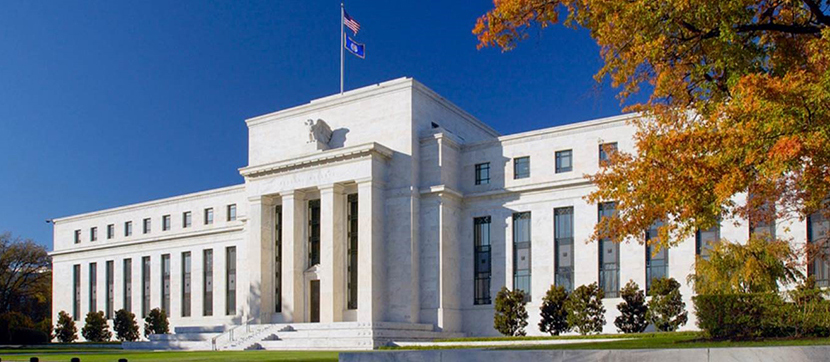
Fed Sees Rising Economic Growth—and Inflation; Moves Up Rate Hike Timetable

The Federal Reserve isn’t raising interest rates anytime soon, but it did suggest Wednesday that the timetable for increases could begin sooner in 2023 if economic growth and inflation continue to rise faster than expected.
In its statement yesterday following its regularly scheduled two-day policy meeting, the Federal Open Market Committee noted a rise in inflation, but said financial conditions remain “accommodative.”
“The Committee would be prepared to adjust the stance of monetary policy as appropriate if risks emerge that could impede the attainment of the Committee’s goals,” the FOMC said. “The Committee’s assessments will take into account a wide range of information, including readings on public health, labor market conditions, inflation pressures and inflation expectations and financial and international developments.”

“The Fed noted that inflation has moved further and faster than expected, even as the job market has not yet fully recovered,” said Mike Fratantoni, Chief Economist with the Mortgage Bankers Association. “This poses a challenge, as any move to slow inflation would at least somewhat slow the path back to full employment. Although the statement noted that the increase in inflation is ‘largely’ due to transitory factors, this recognizes that some of the price increases are likely to persist for a longer period.”
Fratantoni noted FOMC participants show in their forecasts that they now anticipate faster growth and higher inflation in the near-term, and an increase in short-term rates in 2023—consistent with MBA’s forecast.
“Longer-term interest rates, including mortgage rates, jumped earlier this year as vaccinations began and the government pushed more fiscal stimulus into the economy,” Fratantoni said. “In the past few months, mortgage rates have moved within a very narrow range. While the Fed has not yet laid out specific plans with respect to tapering their Treasury and MBS purchases, the changes in their forecasts for the economy, and for their rate target, suggests that tapering is close at hand. As a result, mortgage rates are likely primed to move at least somewhat higher.”
The FOMC statement appears below:
“The Federal Reserve is committed to using its full range of tools to support the U.S. economy in this challenging time, thereby promoting its maximum employment and price stability goals.
“Progress on vaccinations has reduced the spread of COVID-19 in the United States. Amid this progress and strong policy support, indicators of economic activity and employment have strengthened. The sectors most adversely affected by the pandemic remain weak but have shown improvement. Inflation has risen, largely reflecting transitory factors. Overall financial conditions remain accommodative, in part reflecting policy measures to support the economy and the flow of credit to U.S. households and businesses.
“The path of the economy will depend significantly on the course of the virus. Progress on vaccinations will likely continue to reduce the effects of the public health crisis on the economy, but risks to the economic outlook remain.
“The Committee seeks to achieve maximum employment and inflation at the rate of 2 percent over the longer run. With inflation having run persistently below this longer-run goal, the Committee will aim to achieve inflation moderately above 2 percent for some time so that inflation averages 2 percent over time and longer‑term inflation expectations remain well anchored at 2 percent. The Committee expects to maintain an accommodative stance of monetary policy until these outcomes are achieved. The Committee decided to keep the target range for the federal funds rate at 0 to 1/4 percent and expects it will be appropriate to maintain this target range until labor market conditions have reached levels consistent with the Committee’s assessments of maximum employment and inflation has risen to 2 percent and is on track to moderately exceed 2 percent for some time. In addition, the Federal Reserve will continue to increase its holdings of Treasury securities by at least $80 billion per month and of agency mortgage‑backed securities by at least $40 billion per month until substantial further progress has been made toward the Committee’s maximum employment and price stability goals. These asset purchases help foster smooth market functioning and accommodative financial conditions, thereby supporting the flow of credit to households and businesses.
“In assessing the appropriate stance of monetary policy, the Committee will continue to monitor the implications of incoming information for the economic outlook. The Committee would be prepared to adjust the stance of monetary policy as appropriate if risks emerge that could impede the attainment of the Committee’s goals. The Committee’s assessments will take into account a wide range of information, including readings on public health, labor market conditions, inflation pressures and inflation expectations, and financial and international developments.
“Voting for the monetary policy action were Jerome H. Powell, Chair; John C. Williams, Vice Chair; Thomas I. Barkin; Raphael W. Bostic; Michelle W. Bowman; Lael Brainard; Richard H. Clarida; Mary C. Daly; Charles L. Evans; Randal K. Quarles; and Christopher J. Waller.”
